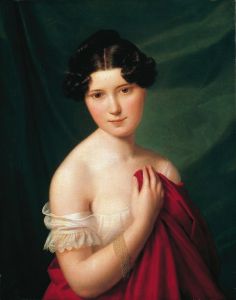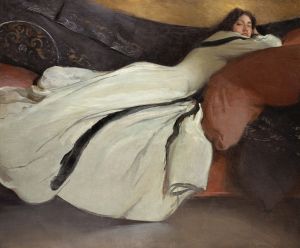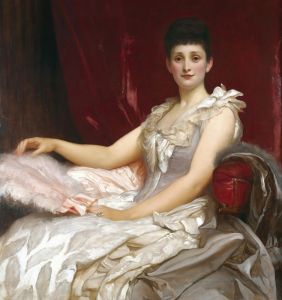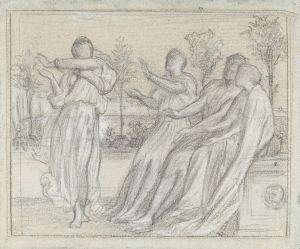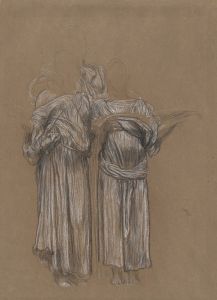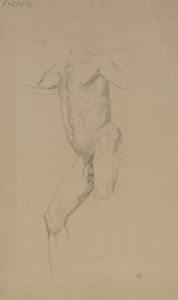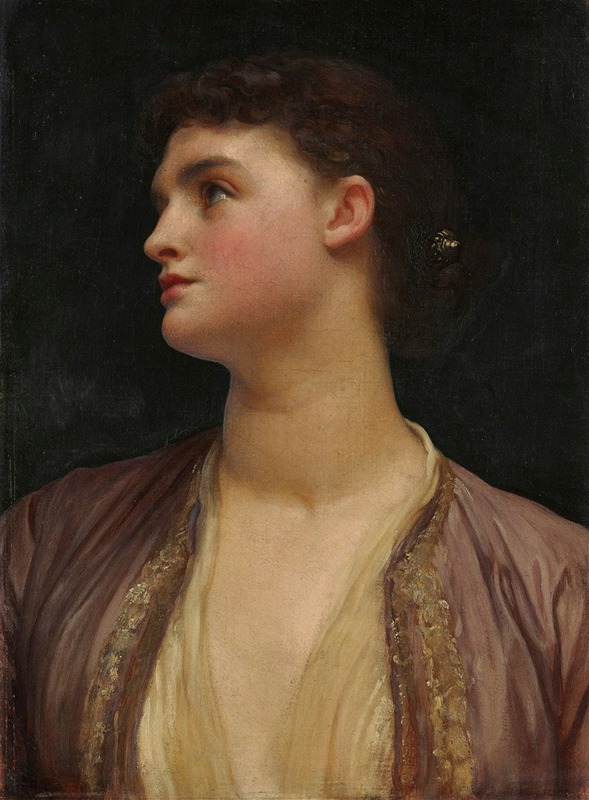
Lucia
A hand-painted replica of Frederic Leighton’s masterpiece Lucia, meticulously crafted by professional artists to capture the true essence of the original. Each piece is created with museum-quality canvas and rare mineral pigments, carefully painted by experienced artists with delicate brushstrokes and rich, layered colors to perfectly recreate the texture of the original artwork. Unlike machine-printed reproductions, this hand-painted version brings the painting to life, infused with the artist’s emotions and skill in every stroke. Whether for personal collection or home decoration, it instantly elevates the artistic atmosphere of any space.
Frederic Leighton, an eminent British artist of the 19th century, is renowned for his contributions to the Victorian art scene, particularly through his association with the Aesthetic Movement and his role as the President of the Royal Academy. One of his notable works is the painting "Lucia," which exemplifies his mastery in capturing the beauty and grace of the human form.
"Lucia" is a testament to Leighton's skill in combining classical themes with a modern sensibility. The painting depicts a young woman named Lucia, who is portrayed with a serene and contemplative expression. Leighton's attention to detail is evident in the delicate rendering of her features and the soft, flowing drapery of her attire. The use of light and shadow in the painting highlights the contours of her face and the texture of the fabric, creating a sense of depth and realism.
Leighton's work often drew inspiration from classical antiquity, and "Lucia" is no exception. The composition and pose of the figure reflect the influence of ancient Greek and Roman art, which Leighton admired and studied extensively. This classical influence is a hallmark of his style, as he sought to elevate contemporary art by infusing it with the timeless qualities of the past.
The painting is characterized by its harmonious color palette, which consists of soft, muted tones that enhance the tranquil mood of the piece. Leighton's use of color is subtle yet effective, contributing to the overall aesthetic appeal of the work. The background is kept simple and unobtrusive, allowing the viewer to focus entirely on the figure of Lucia.
"Lucia" is part of Leighton's broader oeuvre, which includes other celebrated works such as "Flaming June" and "The Bath of Psyche." His paintings often explore themes of beauty, mythology, and the human experience, reflecting his belief in art's power to transcend the mundane and evoke a sense of wonder.
Frederic Leighton's impact on the art world extends beyond his paintings. As a leading figure in the Victorian art community, he played a crucial role in shaping the direction of British art during his time. His presidency at the Royal Academy was marked by efforts to promote artistic excellence and innovation, and he was instrumental in fostering a greater appreciation for the visual arts in society.
"Lucia" remains a significant work within Leighton's portfolio, admired for its elegance and technical proficiency. It exemplifies the qualities that define Leighton's legacy: a dedication to beauty, a reverence for classical ideals, and an unwavering commitment to artistic excellence. Today, his works continue to be celebrated for their contribution to the cultural and artistic heritage of the 19th century.
In summary, "Lucia" by Frederic Leighton is a quintessential example of the artist's ability to blend classical influences with contemporary artistry. Through its graceful depiction of the titular figure, the painting captures the essence of Leighton's artistic vision and his enduring impact on the world of art.








